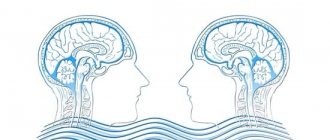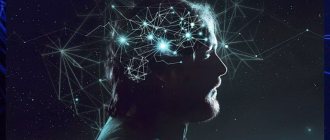Updated July 24, 2021 430 Author: Dmitry Petrov
Hello, dear readers of the KtoNaNovenkogo.ru blog. Nowadays, many online services (especially those related to money in one way or another) have introduced the practice of undergoing identification (it is also sometimes called validation or verification, but this does not change the essence).
Identification may also be required when, for example, you want to restore the rights to your page in Contact (lost for some reason).
Well, in addition to the applied meaning, we will touch upon the question of what the word identification actually means, because it has quite a lot of meanings and is used in a variety of areas (not only those related to the Internet).
What is identification: definitions
What is this? Identification is in psychology the process of an individual’s imitation of another subject, group, fictional character (image); the process of self-identification of an individual with a group, image, or another person. Identification is, in simple words, the search for an answer to the question “Am I the same as who?”
The term was introduced by S. Freud. The psychologist examined the phenomenon within the framework of psychoanalysis. The first thing Freud studied was the child’s identification with one of the parents. At the same time, the researcher came to the conclusion that identification is always based on fear and anxiety. By identifying with a stronger, more authoritative person, the individual reduces the discomfort he experiences.
However, a little later the author identified several types of identification:
- primary (child with mother);
- identification with a loved one (“I want to be like you”);
- identification with an unloved person (a defense mechanism of the psyche, “you will not offend someone like yourself”);
- identification in the perception of community (“stand in my place”, “what would he do”, “what would he think”).
Over time, the concept began to be used in a broader sense. According to him, personal identification is imitation, emotional fusion with someone. However, some psychologists still adhere to the psychoanalytic theory, arguing that it is a defense mechanism developed by evolution that helps in adaptation. Let's take a closer look at modern definitions and find out what identification means in psychology.
Identification
The meaning of the word "identification"
The name is derived from the Latin indentifico, which means “to identify.” Identification is the establishment of correspondence, similarity between two or more objects.
Identification concept
According to definitions from various dictionaries, identification is:
- identification, recognition of objects (encyclopedic dictionary);
- comparison with a standard, identification for litigation (business dictionary);
- subconscious identification of oneself with another person, often a parent (psychiatric dictionary);
- a psychological defense mechanism in which an individual becomes like his offender and identifies himself with him (psychological dictionary);
- a protective mechanism of the psyche, in which a weak person adopts the experience and features of a strong person (psychological dictionary).
In sociology, identification is understood as the process of an individual identifying himself with some group, another person. This is clearly visible in the example of youth subcultures. An individual copies the external attributes, behavior, values, beliefs, and interests of the group.
See also: PSYCHOPHISIOLOGY - directions and tasks
Origin and meaning of the cognate adjective
The verb was not found in the etymological dictionary, but a related adjective was easily found there. And since history miraculously enriches knowledge and makes it voluminous, we cannot leave the reader without this information.
We borrowed the word a long time ago, in the 19th century, from French. In Russian it means “the same.” Naturally, the source language is Latin. In Russian, as we well know, identical is “identical, completely identical.”
True, in living speech a word does not always correspond to its meaning. For example, when we say “identical devices,” we mean that they are identical in function, but not equal in detail. Okay, the reader probably knows all this without us. We have not forgotten that our goal is to “identify.” This discovery is yet to come.
Types of identification
It can be primary and secondary. In the first case, we are talking about the child's identification with the mother, and later with the parent of the same sex as the child. In the second case, the child’s identification with other people and groups in the process of growing up is implied. It, in turn, is divided into several more subspecies. Let's take a closer look.
Situational
This is clearly noticeable in children during games, in adults - at a meeting, when meeting a new person, etc. In general, in some specific situation or conditions, an individual tries to become the same as a person significant to him.
Group
This is a stable type. It implies an individual’s commitment to the values and goals of a group. Outside of it, the subject lives by the same rules. However, sometimes group identity is situational and superficial. A person does not accept the goals and interests of the group as his own. Once he leaves this group, he will behave differently.
Cultural
This is a process of identification, adaptation to the culture of society. A person needs to find a balance between internal and external. For example, between traditions and innovation, goals and means. The subject has to realize his own potential within a particular society. Accept the norms and values of this world.
Social
This is the process of a person identifying himself as an important, active participant in society. He perceives himself as a social agent, feels that he belongs to some social group, and can pronounce “WE” with complete confidence.
Personal
This is a person’s assimilation to himself, that is, the preservation of his uniqueness. Implies unity of goals, interests, views, beliefs, motives, meanings. No matter what group a person belongs to, he always retains a set of stable characteristics.
Finding a balance between personal and public is one of the most difficult problems in psychology. Sometimes a person becomes so similar to others that he loses himself. He dissolves into other people. He forgets about his essence, loses the unity of his Self, ceases to understand himself, forgets his life story.
See also: Human individuality - what is it
Collectivist
Formed in the process of general activity. The experiences of one person are transmitted to others and become motives for common activity. Collectivist identification manifests itself in complicity and sympathy. Each team member shares the failures and successes of the other. That is, a person feels others as himself.
Sexual
The process of becoming aware of belonging to one of the genders. Interest in the body is especially noticeable in children 2–3 years old.
Gender
The process of realizing which gender (collective image of a man and a woman) a person considers himself to be. It doesn't always match the gender. Gender identity provides the answer to the question “Who do I feel like: a man or a woman?” At the same time, a person understands perfectly well which gender he belongs to. For example, a man can recognize his gender, but at the same time be vulnerable, sensitive, gentle, that is, have a set of traits that are generally characteristic of women. Likewise, a woman, despite her gender, can feel like a “man in a skirt.”
Additional synonyms (19)
identify, establish identity, discover, detect, compare, record, record, identify, establish, discern, designate, register, discern, identify, compare, verify, type up, get acquainted, recognize
Didn't find the synonym you need?
1. Sentences to “identify”. 2. The meaning of the word. 3. Antonyms for “identify”. 4. Printing, . 5. Rhymes.
With the same beginning: identified, identifying, identified, identified, identified
With the same ending: can be identified
Other words that start with i, words that start with i, and words that end with b
Synonyms:
Top ↑ Dictionary of synonyms Association Dictionary of antonyms
Identification in psychology
This is the likening of an individual to some person, group, or image. Without this, the development and formation of personality is impossible. Very often identification is confused with imitation and identity. Let's look at these connections in more detail.
Identification and simulation
Imitation is conscious imitation. Identification is an unconscious process. Identification helps a person develop and build his life path. However, under unfavorable conditions, unconscious imitation leads to developmental stagnation and dissociation.
Identification and Identity: What's the Difference?
What it is? Identity is the result. Identification is a process. In the first case, a person realizes and recognizes his identity with someone. In the second case, he seeks and finds identity.
Pain points of personal identity
What are the painful points of a person’s self-identification? These are those characteristics of an individual that a person knows about, but considers them negative traits. For example, at the socio-professional level of self-identification, this may be the lack of a specific skill necessary in professional activity, and at the level of values and ideology - excessive love for animals combined with relative indifference to people’s troubles. When communicating with other people, a person experiences psychological discomfort if he has to talk about “painful” topics relating to his personality.
What does identification mean in forensics?
This is a determination of the identity of a person based on general and specific characteristics, for example, fingerprints and handwriting. In addition to identifying individuals, criminologists are engaged in identifying objects:
- seals based on impressions;
- weapons by bullets, cartridges;
- shoes on the tracks;
- tools for burglary or other crime in the wake of burglary or other crime;
- car following wheel tracks;
- other.
The whole is also identified by its individual parts.
See also: CONFORMISM - what is it in simple words
Identification methods
To determine identity, criminologists use static and dynamic methods. The first includes the analysis of the biological and physiological characteristics of the individual:
- palm print, fingerprint;
- shape, features, proportions of the face;
- drawing of the retina, iris;
- height, body proportions, size of arms, legs;
- handwriting, signature.
Most often, dactyloscopy (fingerprint analysis) and identification of a person by appearance are used:
- thickness, length, other features of the limbs;
- back features;
- breast specificity;
- characteristics of shoulders, neck;
- wrinkles;
- shape of the auricle;
- teeth;
- height;
- weight;
- lips;
- nose;
- eyes;
- brows;
- forehead;
- face;
- hair;
- floor;
- age;
- general body type;
- head.
Dynamic methods include the analysis of everything related to behavior:
- speech,
- facial expressions,
- gestures,
- poses,
- gait,
- voice,
- posture.
Definition of the concept
Self-identification is the basis of one’s “I”, an assessment of one’s own abilities, personality traits, personal, physical and moral characteristics. Each person determines for himself how capable he is of performing a particular activity, achieving goals, displaying feelings or physical qualities. Based on this data, a person can classify himself as a member of one or another group: religious, sports, intellectual and others. For example, a person who is aware of his ability to draw may classify himself as an artist, and someone who sees himself as having excellent physical abilities identifies himself as an athlete. The only way for a person to self-identify is reflection: only by deeply reflecting on himself can a person understand who he is, what he wants and where he is going.
Loss of personal identity
At any age, loss of personal identity can occur. It may have external or internal causes. The first include such as loss of a job or loss of social status. The second is a change in interests, loss of previous values, a global revision of life goals. Regardless of the reason, when self-identity is lost, a person loses his place in some social groups in which he previously felt comfortable. A person must look for new life goals and his new place in society for a successful future. Otherwise, there is a high risk of personality degradation, the acquisition of any kind of addiction or the development of severe depression.











